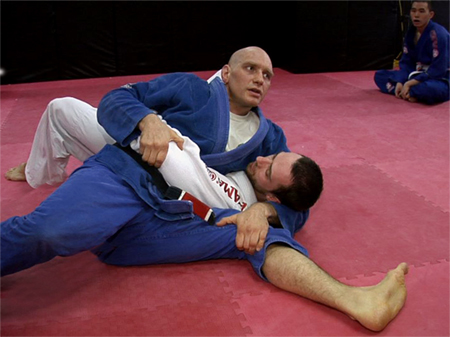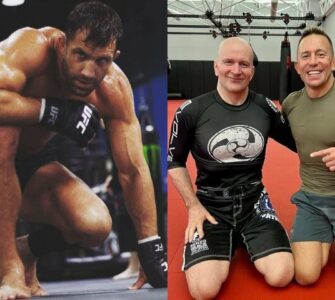The scarf hold position may be one of the MOST EFFECTIVE, yet misunderstood positions in all of BJJ. Often the position is viewed as risky in jiu-jitsu, but yet this method of control is a staple in the arsenals of so many other grappling arts.
Kesa Gatame, translated as scarf hold, is a grappling position where one opponent controls the other from the back while facing up. Although commonly used in judo, it is generally avoided in Brazilian jiu-jitsu for several (wrong) reasons.
First, Kesa Gatame exposes the practitioner’s back, which is a vulnerable position against the many submission techniques used in Brazilian jiu-jitsu. Opponents can easily attack the practitioner’s arms and legs from this position.
Second, Brazilian jiu-jitsu focuses more on ground fighting and submissions than judo. Practitioners want to move quickly into positions that allow for submissions rather than holding opponents down. Kesa Gatame primarily functions as a control position rather than one that enables submissions.
Third, Brazilian jiu-jitsu emphasizes a greater range of techniques and strategies compared to judo. Practitioners want to explore options beyond traditional judo positions like Kesa Gatame. Instead, they experiment with unique positions and submissions not commonly seen in judo.
Kesa Gatame is avoided in Brazilian jiu-jitsu due to concerns about vulnerability, lack of offensive capabilities, and the art’s emphasis on a broader range of techniques beyond traditional judo. These reasons are all wrong as the kase gatame is a very effective position, especially since most BJJ practitioners do not know how to properly escape or even apply this position.
Henry Akins shows the secret to more effective scarf hold:
The stigma of the kesa gtamae/ scarf hold ends here.
Steal souls with incredible details on entries, methods of control, adding pressure, and finishing from the scarf hold position.
Discover the huge effectiveness of jiu-jitsu’s most misunderstood position with the highly sought after instruction of Henry Akins.



















